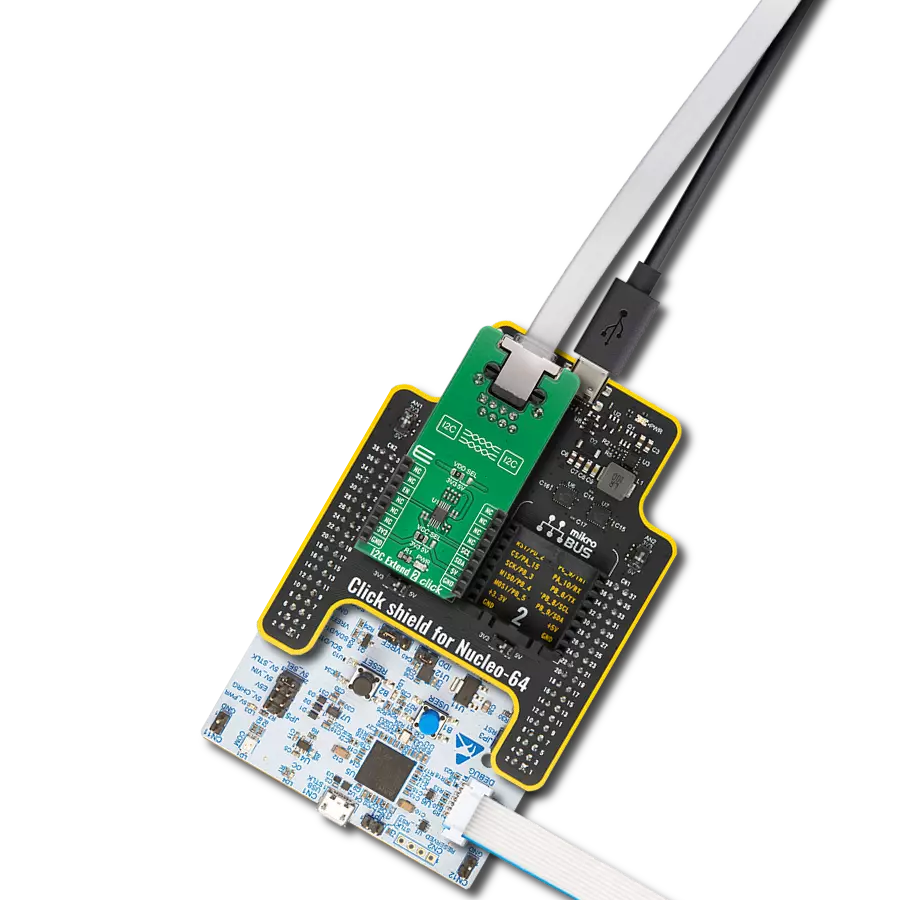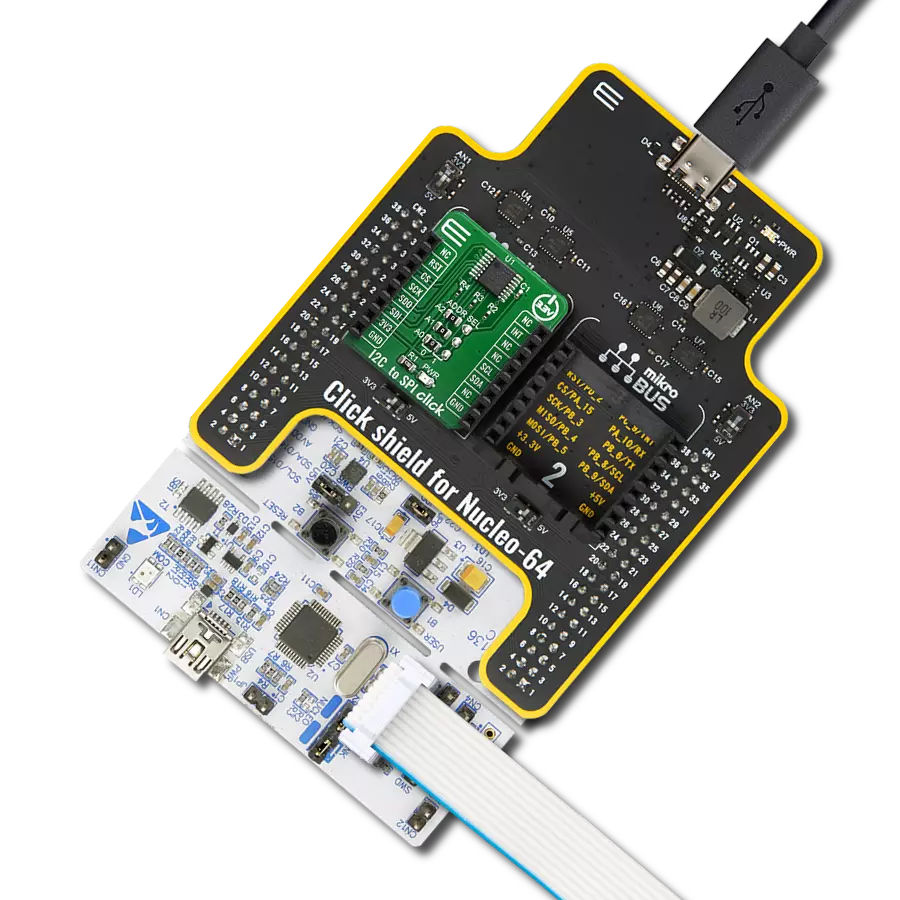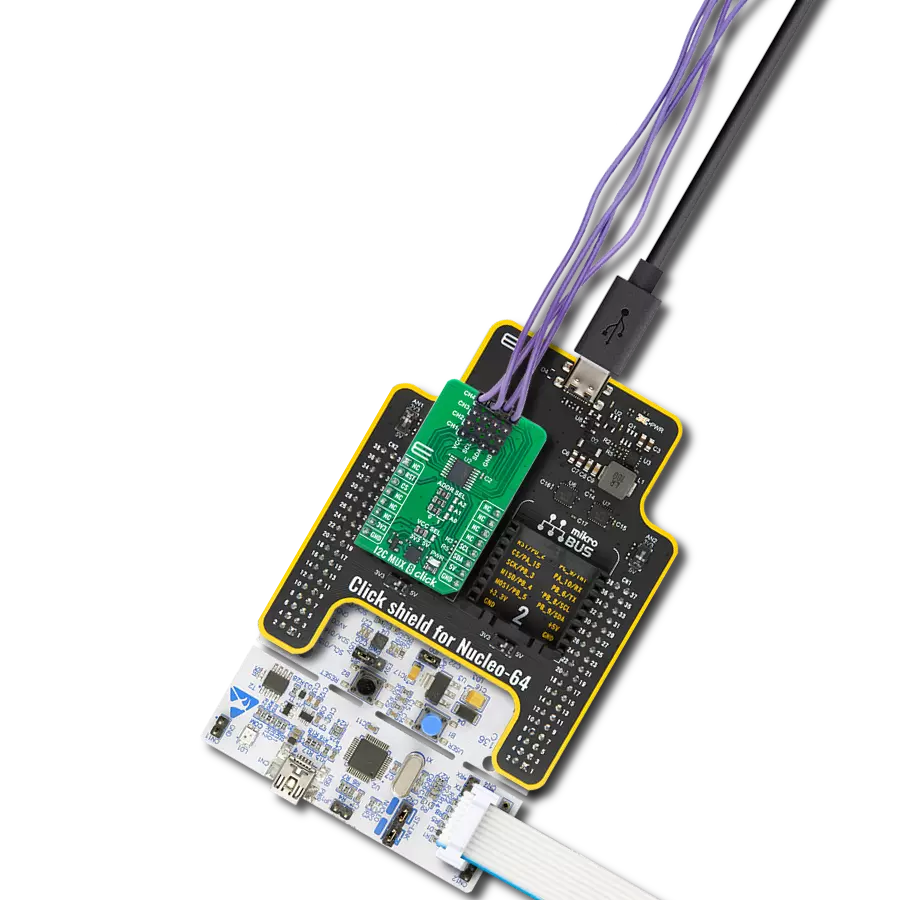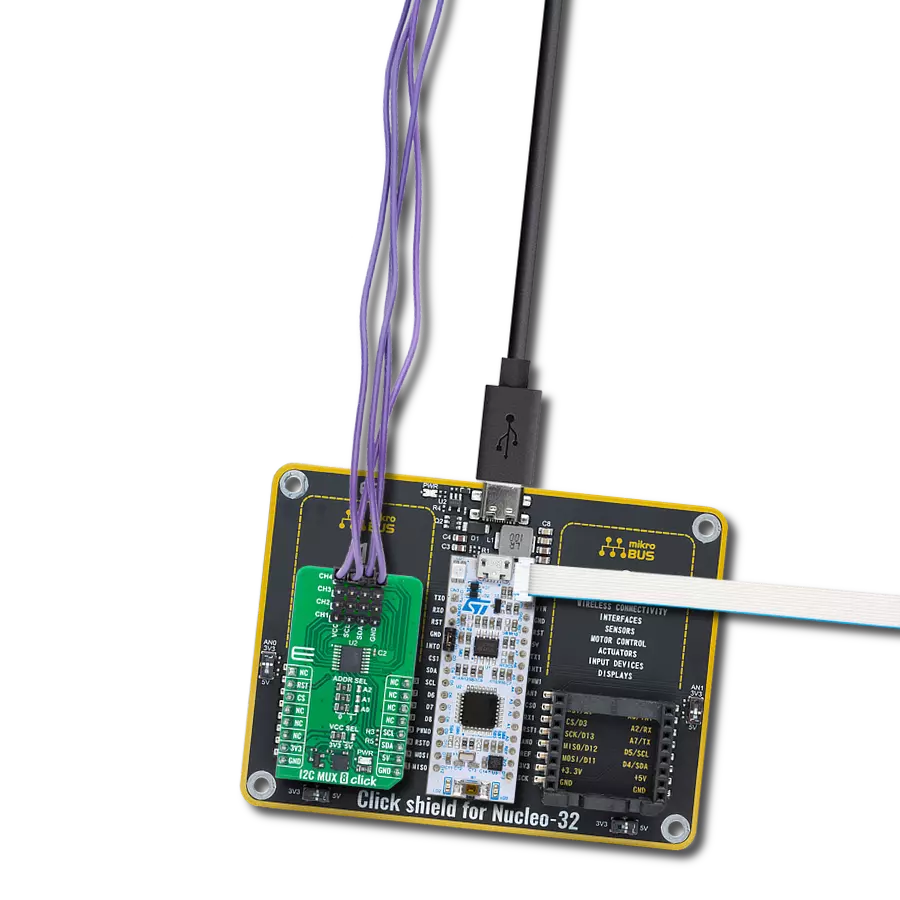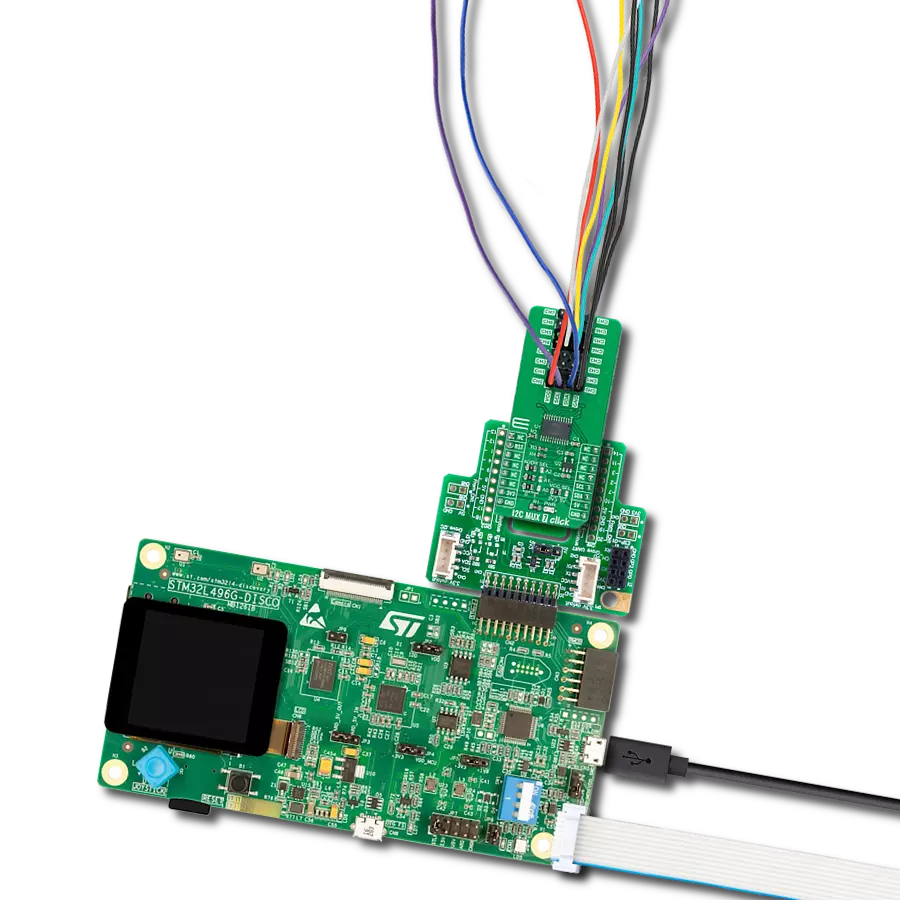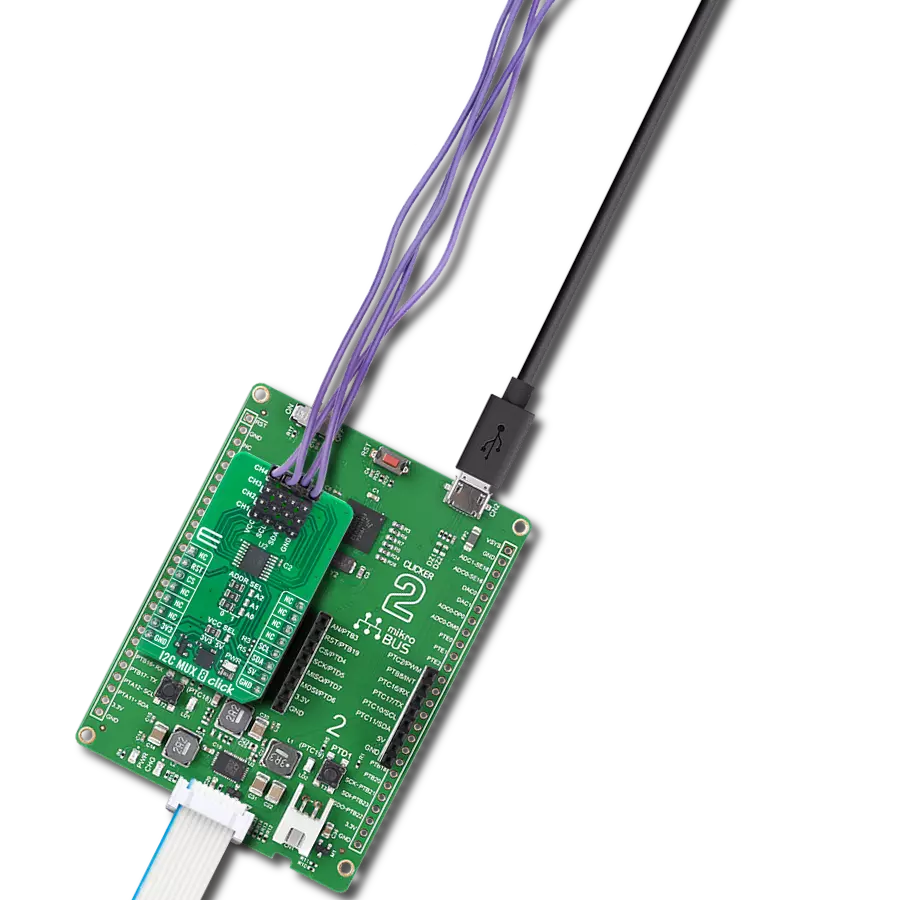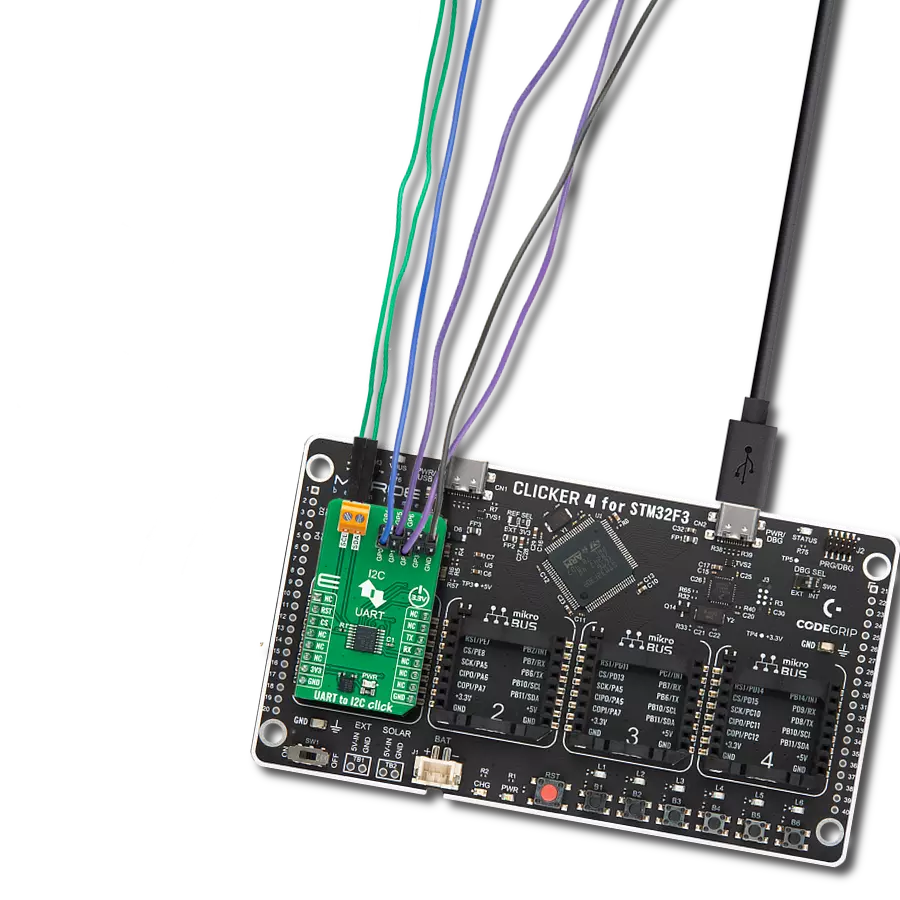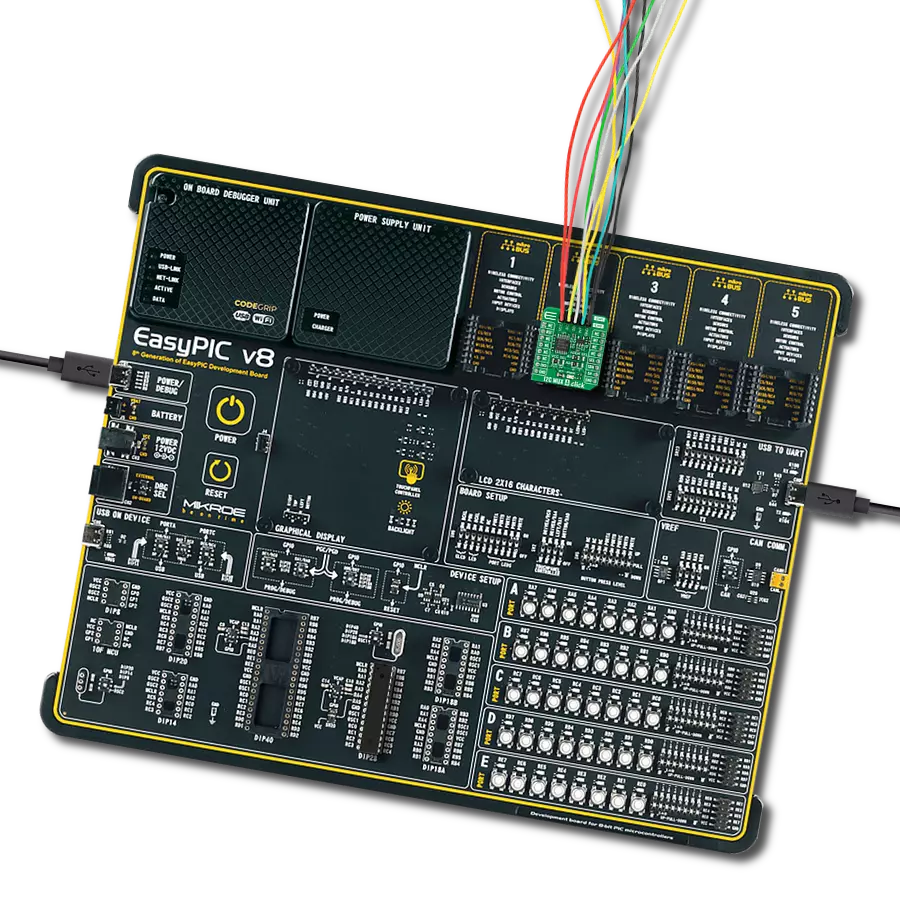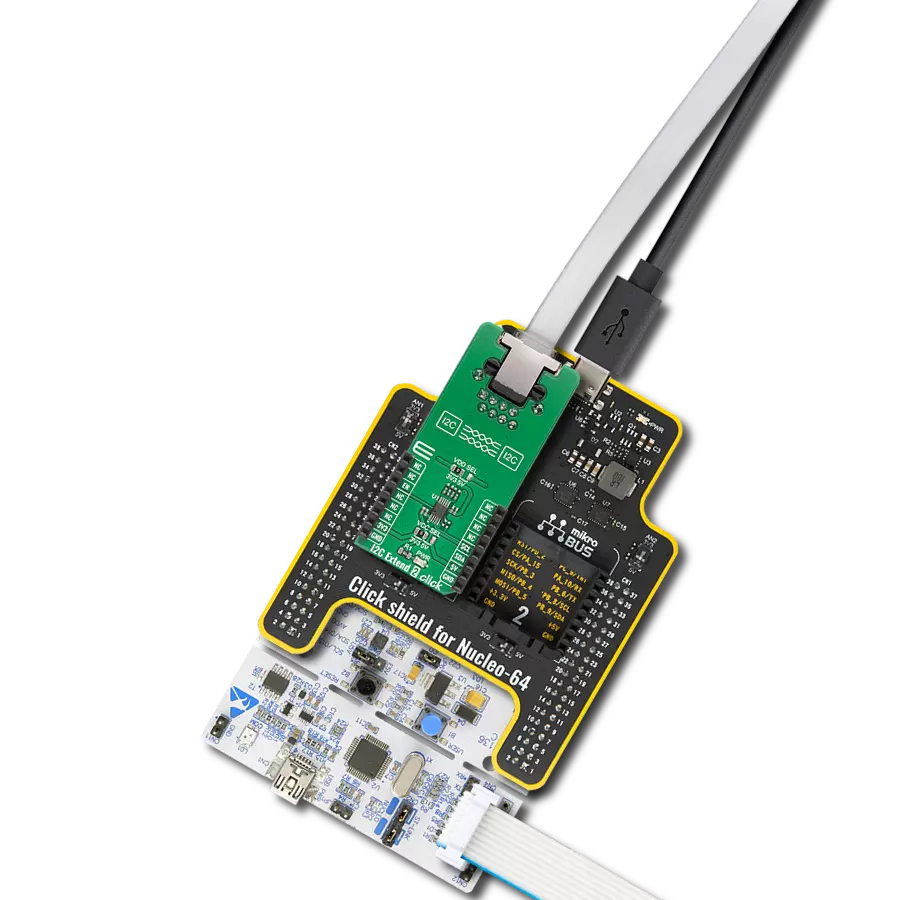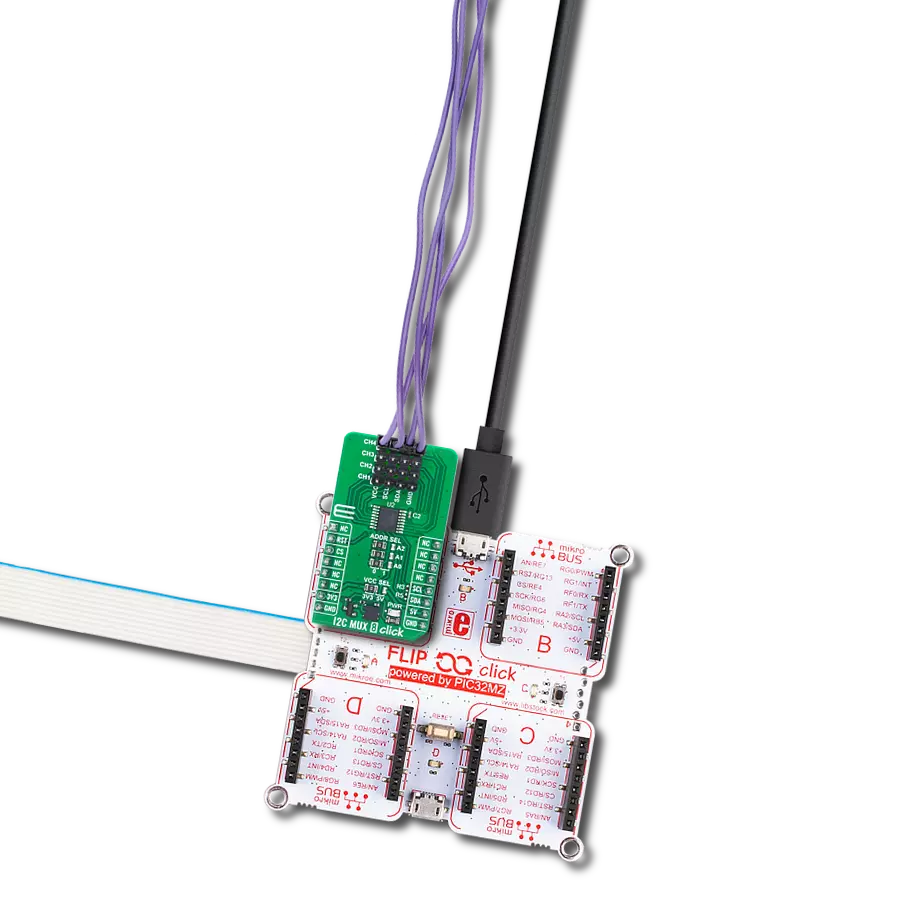Redefine your I2C isolation experience with our hot-swappable isolator, where power and data protection merge seamlessly, simplifying your setup and enhancing system reliability.
A
A
Hardware Overview
How does it work?
I2C Isolator 2 Click is based on the ADM3260, a hot-swappable dual I2C isolator with an integrated DC-to-DC converter from Analog Devices. The digital isolator block is on each side of a bidirectional I2C signal. Internally, the I2C interface is split into two unidirectional channels communicating in opposing directions via a dedicated iCoupler isolation channel for each. One channel senses the voltage state of one side and transmits its state to its respective second side.
This isolator can achieve I2C clock speeds of up to 1MHz and supports 3 - 5.5V logic levels. I2C Isolator 2 Click uses a standard 2-Wire I2C interface to allow isolated communication between the host MCU and the connected I2C device. The isolator allows you to disable the I2C communication over the PDIS pin, which, with a High logic level, puts the isolator in standby mode. The I2C Isolator 2 Click is equipped with the VIO ISO jumper, which allows you to work with isolated different logic
levels. The 3V3 is set by default. This Click board™ can operate with either 3.3V or 5V logic voltage levels selected via the VIO SEL jumper. This way, both 3.3V and 5V capable MCUs can use the communication lines properly. Also, this Click board™ comes equipped with a library containing easy-to-use functions and an example code that can be used as a reference for further development.
Features overview
Development board
Clicker 4 for STM32F4 is a compact development board designed as a complete solution that you can use to quickly build your own gadgets with unique functionalities. Featuring an STM32F407VGT6 MCU, four mikroBUS™ sockets for Click boards™ connectivity, power management, and more, it represents a perfect solution for the rapid development of many different types of applications. At its core is an STM32F407VGT6 MCU, a powerful microcontroller by STMicroelectronics based on the high-performance
Arm® Cortex®-M4 32-bit processor core operating at up to 168 MHz frequency. It provides sufficient processing power for the most demanding tasks, allowing Clicker 4 to adapt to any specific application requirements. Besides two 1x20 pin headers, four improved mikroBUS™ sockets represent the most distinctive connectivity feature, allowing access to a huge base of Click boards™, growing on a daily basis. Each section of Clicker 4 is clearly marked, offering an intuitive and clean interface. This makes working with the
development board much simpler and, thus, faster. The usability of Clicker 4 doesn’t end with its ability to accelerate the prototyping and application development stages: it is designed as a complete solution that can be implemented directly into any project, with no additional hardware modifications required. Four mounting holes [4.2mm/0.165”] at all four corners allow simple installation by using mounting screws.
Microcontroller Overview
MCU Card / MCU
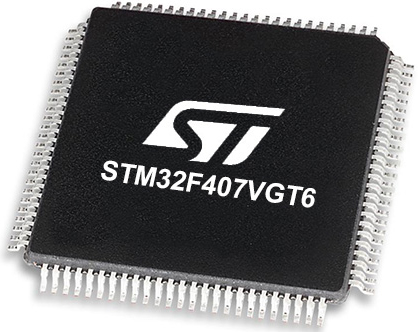
Architecture
ARM Cortex-M4
MCU Memory (KB)
10
Silicon Vendor
STMicroelectronics
Pin count
100
RAM (Bytes)
100
Used MCU Pins
mikroBUS™ mapper
Take a closer look
Click board™ Schematic
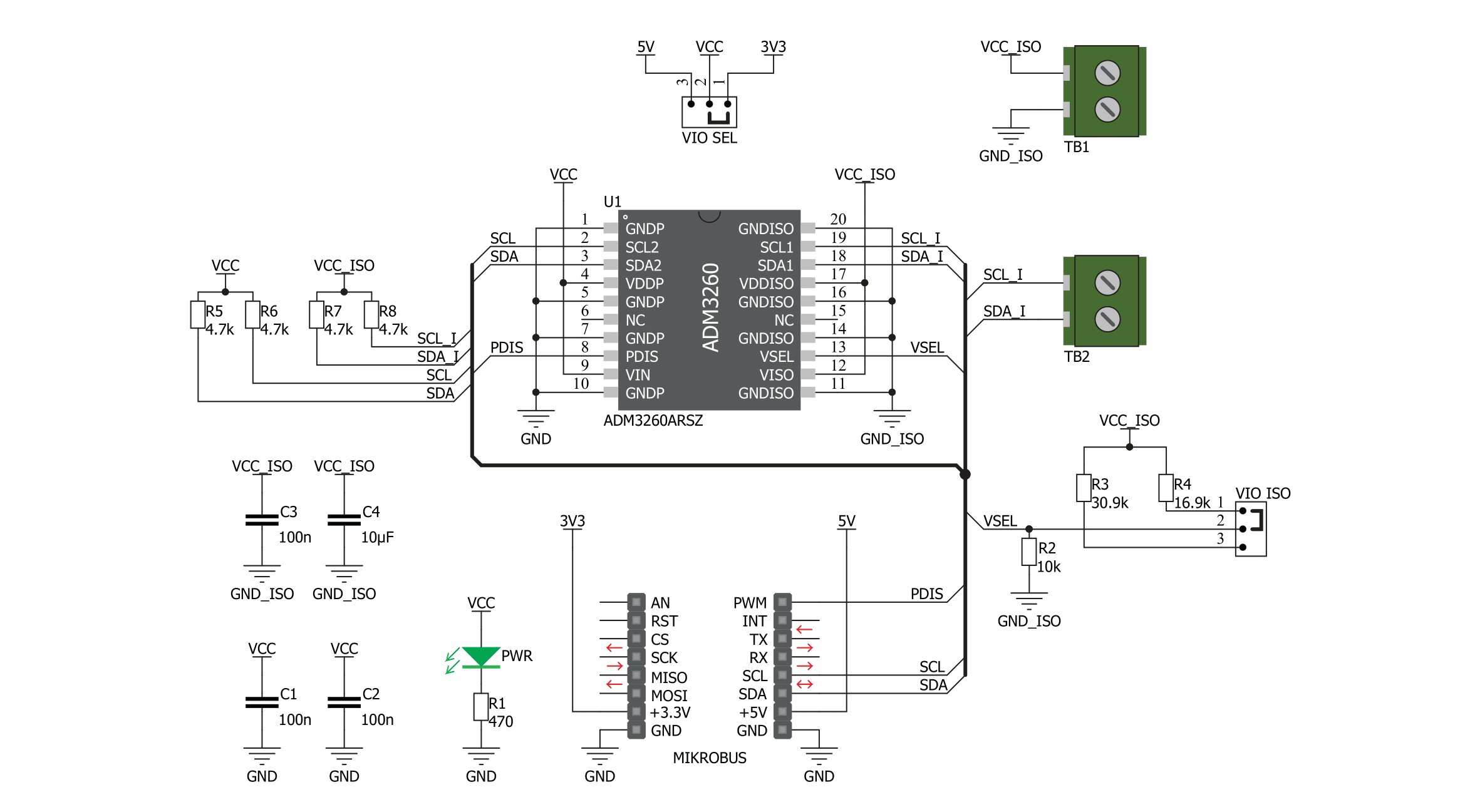
Step by step
Project assembly
Software Support
Library Description
This library contains API for I2C Isolator 2 Click driver.
Key functions:
i2cisolator2_write- This function writes a desired data to I2C bus.i2cisolator2_read- This function reads a desired number of data bytes from I2C bus.i2cisolator2_set_slave_address- This function sets the slave address.
Open Source
Code example
The complete application code and a ready-to-use project are available through the NECTO Studio Package Manager for direct installation in the NECTO Studio. The application code can also be found on the MIKROE GitHub account.
/*!
* \file
* \brief I2C Isolator 2 Click example
*
* # Description
* This example showcases how to initialize, configure and use the I2C Isolator 2 Click module.
* The Click provides I2C lines and power isolation for slave devices. In order for this
* example to work, you need the EEPROM 3 Click.
*
* The demo application is composed of two sections :
*
* ## Application Init
* Initializes the driver and enables the power output.
*
* ## Application Task
* Writes the desired message to EEPROM 3 Click board and reads it back every 2 seconds.
* All data is being displayed on the USB UART where you can track the program flow.
*
* @note
* Make sure to provide the VCC power supply on VCC pin and EEPROM 3 Click.
*
* \author MikroE Team
*
*/
// ------------------------------------------------------------------- INCLUDES
#include "board.h"
#include "log.h"
#include "i2cisolator2.h"
// ------------------------------------------------------------------ VARIABLES
#define EEPROM3_MEMORY_ADDRESS 0x10000ul
#define EEPROM3_SLAVE_ADDRESS 0x54
#define EEPROM3_DEMO_TEXT "MikroE - I2C Isolator 2 with EEPROM 3 Click!"
static i2cisolator2_t i2cisolator2;
static log_t logger;
// ------------------------------------------------------ ADDITIONAL FUNCTIONS
err_t eeprom3_write_page( uint32_t address, uint8_t *data_in, uint8_t len )
{
uint8_t data_buf[ 257 ] = { 0 };
uint8_t slave_addr = ( uint8_t ) ( ( address >> 16 ) & 0x03 ) | EEPROM3_SLAVE_ADDRESS;
i2cisolator2_set_slave_address ( &i2cisolator2, slave_addr );
data_buf[ 0 ] = ( uint8_t ) ( ( address >> 8 ) & 0xFF );
data_buf[ 1 ] = ( uint8_t ) ( address & 0xFF );
for ( uint8_t cnt = 0; cnt < len; cnt++ )
{
data_buf[ cnt + 2 ] = data_in[ cnt ];
}
return i2cisolator2_write( &i2cisolator2, data_buf, len + 2 );
}
err_t eeprom3_read_page( uint32_t address, uint8_t *data_out, uint8_t len )
{
uint8_t data_buf[ 2 ] = { 0 };
uint8_t slave_addr = ( uint8_t ) ( ( address >> 16 ) & 0x03 ) | EEPROM3_SLAVE_ADDRESS;
i2cisolator2_set_slave_address ( &i2cisolator2, slave_addr );
data_buf[ 0 ] = ( uint8_t ) ( ( address >> 8 ) & 0xFF );
data_buf[ 1 ] = ( uint8_t ) ( address & 0xFF );
err_t error_flag = i2cisolator2_write( &i2cisolator2, data_buf, 2 );
error_flag |= i2cisolator2_read( &i2cisolator2, data_out, len );
return error_flag;
}
// ------------------------------------------------------ APPLICATION FUNCTIONS
void application_init ( )
{
log_cfg_t log_cfg;
i2cisolator2_cfg_t cfg;
/**
* Logger initialization.
* Default baud rate: 115200
* Default log level: LOG_LEVEL_DEBUG
* @note If USB_UART_RX and USB_UART_TX
* are defined as HAL_PIN_NC, you will
* need to define them manually for log to work.
* See @b LOG_MAP_USB_UART macro definition for detailed explanation.
*/
LOG_MAP_USB_UART( log_cfg );
log_init( &logger, &log_cfg );
log_info( &logger, " Application Init " );
// Click initialization.
i2cisolator2_cfg_setup( &cfg );
I2CISOLATOR2_MAP_MIKROBUS( cfg, MIKROBUS_1 );
i2cisolator2_init( &i2cisolator2, &cfg );
i2cisolator2_enable_power( &i2cisolator2, I2CISOLATOR2_POWER_ENABLE );
Delay_ms ( 100 );
log_info( &logger, " Application Task " );
}
void application_task ( )
{
uint8_t read_buf[ 100 ] = { 0 };
if ( I2CISOLATOR2_OK == eeprom3_write_page ( EEPROM3_MEMORY_ADDRESS, EEPROM3_DEMO_TEXT,
strlen( EEPROM3_DEMO_TEXT ) ) )
{
log_printf( &logger, " Demo text message is written to EEPROM 3 Click!\r\n" );
}
Delay_ms ( 1000 );
if ( I2CISOLATOR2_OK == eeprom3_read_page ( EEPROM3_MEMORY_ADDRESS, read_buf,
strlen( EEPROM3_DEMO_TEXT ) ) )
{
read_buf[ strlen( EEPROM3_DEMO_TEXT ) ] = 0;
log_printf( &logger, " Read data: \"%s\"\r\n\n", read_buf );
}
Delay_ms ( 1000 );
}
int main ( void )
{
/* Do not remove this line or clock might not be set correctly. */
#ifdef PREINIT_SUPPORTED
preinit();
#endif
application_init( );
for ( ; ; )
{
application_task( );
}
return 0;
}
// ------------------------------------------------------------------------ END
Additional Support
Resources
Category:I2C


















